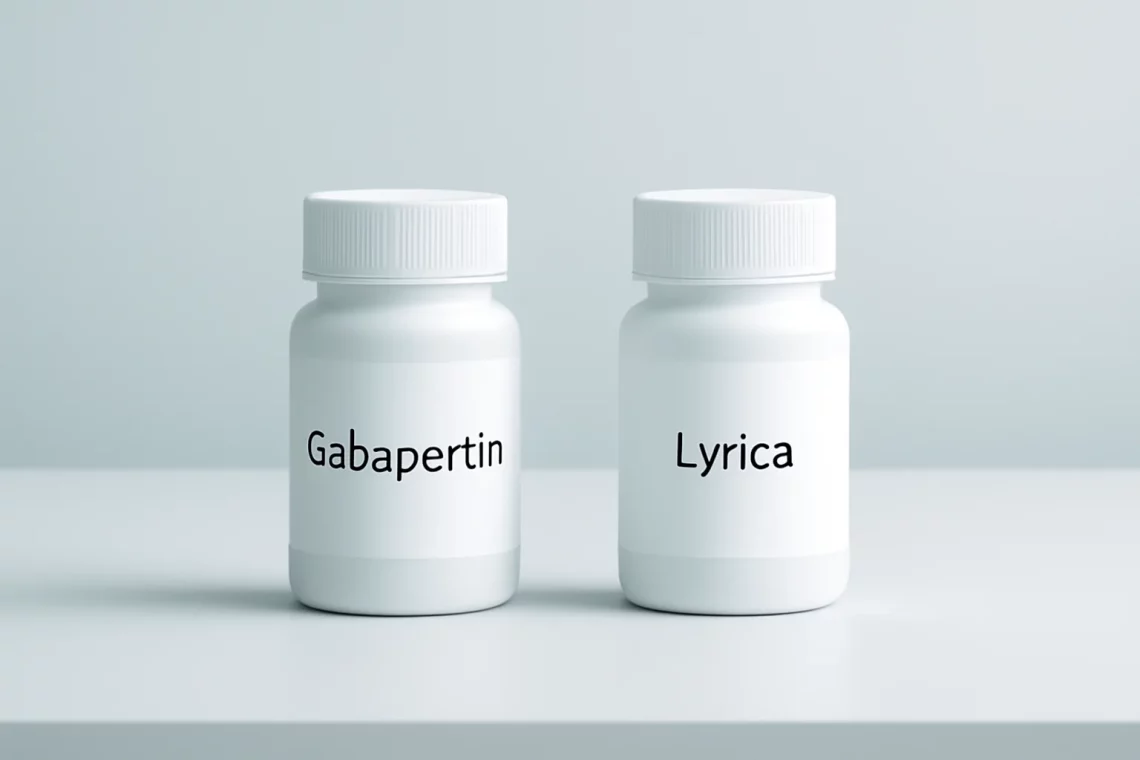
Gabapentin vs Lyrica: A Comprehensive Comparison of Two Medications
Gabapentin and Lyrica are two medications commonly used to manage various types of nerve pain and certain seizure disorders. Both drugs belong to a class of medications known as anticonvulsants, which work by stabilizing electrical activity in the brain and modulating neurotransmitter release. Despite their similar purposes, gabapentin and Lyrica (pregabalin) have distinct formulations, efficacy profiles, and potential side effects, making it essential for healthcare providers to carefully consider which medication may be most appropriate for each individual patient.
The rise in awareness regarding chronic pain conditions has led to increased usage of these medications, often resulting in confusion among patients who may not fully understand the differences between them. Both drugs have been studied extensively, yet they may not be interchangeable, as their mechanisms of action and pharmacokinetics can vary significantly. Understanding these differences is crucial for patients seeking relief from conditions such as neuropathic pain, fibromyalgia, or epilepsy.
In this article, we will delve into the key differences and similarities between gabapentin and Lyrica, exploring their mechanisms of action, indications, side effects, and considerations in treatment. By examining these aspects, we aim to provide valuable insights for patients and caregivers navigating the complexities of pain management and neurological disorders.
Mechanism of Action
Gabapentin and Lyrica function primarily by inhibiting the release of excitatory neurotransmitters, thereby reducing neuronal excitability. While both medications share this overarching mechanism, they do so through different pathways and interactions within the nervous system.
Gabapentin is structurally similar to the neurotransmitter gamma-aminobutyric acid (GABA), yet it does not bind directly to GABA receptors. Instead, gabapentin binds to the alpha-2-delta subunit of voltage-gated calcium channels in the central nervous system. This binding reduces the influx of calcium ions into neurons, leading to decreased neurotransmitter release, which helps to alleviate pain and prevent seizures.
On the other hand, Lyrica also targets the alpha-2-delta subunit of calcium channels but has a higher affinity for these sites compared to gabapentin. This enhanced binding capability may contribute to Lyrica’s more potent analgesic effects and quicker onset of action. The difference in binding affinity can explain why some patients may respond better to Lyrica than to gabapentin, or vice versa.
Both medications have been shown to be effective in treating neuropathic pain, but their mechanisms of action highlight the importance of individualized treatment plans. Understanding how each medication interacts with the nervous system can help clinicians make informed decisions about which drug may be more appropriate for a particular patient.
Indications and Uses
Gabapentin is commonly prescribed for several conditions, including neuropathic pain associated with conditions like diabetic neuropathy and postherpetic neuralgia. It is also used as an adjunctive treatment for partial seizures in adults and children. Its versatility makes it a popular choice among healthcare providers, especially for those who may have difficulty tolerating other pain management options.
Lyrica, while also effective for neuropathic pain, has a broader approval profile. In addition to its use in treating diabetic neuropathy and postherpetic neuralgia, Lyrica is FDA-approved for the treatment of fibromyalgia, a chronic condition characterized by widespread musculoskeletal pain, fatigue, and tenderness. Lyrica is also indicated for generalized anxiety disorder and neuropathic pain associated with spinal cord injury.
The choice between gabapentin and Lyrica often depends on the specific condition being treated, the severity of symptoms, and individual patient factors such as previous treatment responses and tolerance to side effects. For example, patients with fibromyalgia may benefit more from Lyrica due to its specific approval for this condition and its pharmacological profile.
Additionally, the duration of treatment and dosing regimens can differ between the two medications, with Lyrica typically requiring fewer daily doses due to its longer half-life. This can improve patient compliance and convenience, making it an attractive option for some individuals.
Side Effects and Considerations
Both gabapentin and Lyrica come with potential side effects, which can influence treatment decisions. Common side effects for gabapentin include dizziness, fatigue, and peripheral edema. While these side effects are generally mild, they can impact a patient’s quality of life, particularly if they interfere with daily activities.
Lyrica’s side effects can overlap with those of gabapentin but may also include additional risks such as weight gain and cognitive impairment. Some patients report feelings of euphoria or sedation, which can lead to misuse or dependence, particularly in individuals with a history of substance abuse. It is essential for healthcare providers to monitor patients closely for these side effects during treatment.
Furthermore, both medications can interact with other drugs, necessitating a thorough review of a patient’s medication regimen before initiation. A patient’s overall health status, including any pre-existing conditions, must also be considered when prescribing these medications.
In terms of discontinuation, patients should be advised against abruptly stopping either medication, as this can lead to withdrawal symptoms or exacerbation of the underlying condition. A gradual tapering of the dosage is often recommended to minimize potential withdrawal effects and ensure a safe transition.
Cost and Availability
Cost can be a significant factor when considering treatment options. Gabapentin is typically less expensive than Lyrica, making it a more accessible choice for many patients, especially those without insurance coverage or with high out-of-pocket expenses. The availability of generic formulations of gabapentin further enhances its affordability, allowing patients to manage their conditions without financial strain.
Lyrica, while effective, tends to be more costly, and not all insurance plans may cover it, particularly for off-label uses. Patients may find themselves facing higher copays or needing prior authorization for Lyrica, potentially leading to delays in treatment. This can be particularly challenging for individuals with chronic pain or seizure disorders who require timely intervention.
Healthcare providers should consider these financial implications when recommending a treatment plan. In some cases, they may suggest starting with gabapentin due to its lower cost and then transitioning to Lyrica if additional pain control is needed. Patient education regarding the financial aspects of medication can empower individuals to advocate for themselves and explore potential assistance programs or alternatives.
In conclusion, both gabapentin and Lyrica offer valuable options for managing neuropathic pain and other medical conditions. Understanding the differences in their mechanisms of action, indications, side effects, and costs can guide informed decisions in treatment. However, it is essential for patients to consult with their healthcare providers to determine the most appropriate medication based on their unique circumstances.
**Disclaimer**: This article is not intended as medical advice. Always consult with a healthcare professional for any medical issues or concerns.




